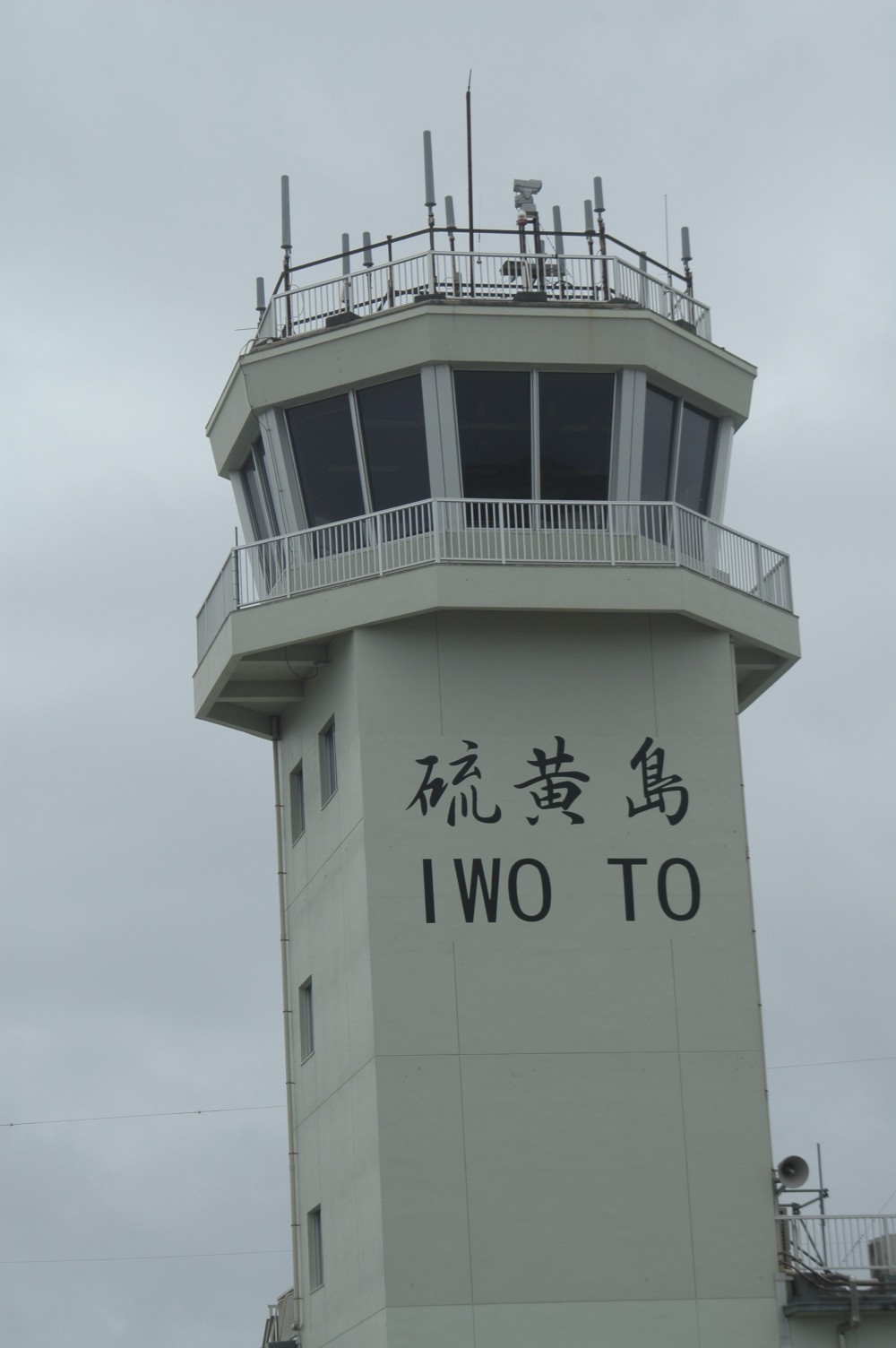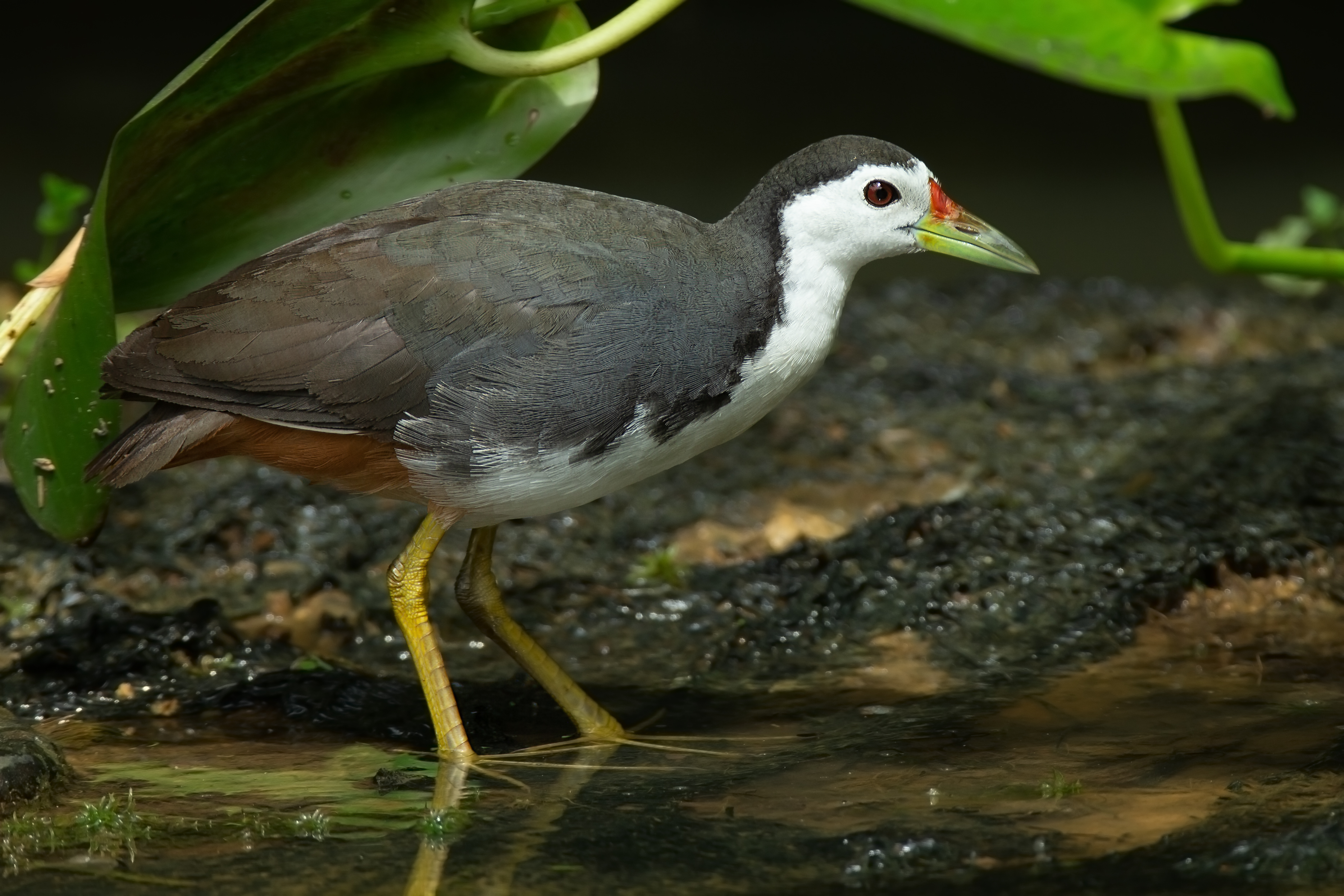|
Iwo Jima Rail
The Iwo Jima rail or white-browed crake (''Poliolimnas cinereus brevipes'') was a rail native to the island of Iwo Jima. The last reported sightings were in 1924, and the species is believed to be extinct. It was a subspecies of the white-browed crake. Description The Iwo Jima rail was coloured dark brown, with black mottles on its back, and a white colouration on its belly. The bird was typically about six inches long. Ecology The species ''cinereus'' was typically found in both brackish water and fresh water marshes. Iwo Jima, however, lacked these features, and the Iwo Jima subspecies lived in the brush and tall grass along rivulets on the island, as well as damp places within the original forest cover. Extinction When humans settled the island of Iwo Jima, they cleared away the existing forest to grow sugarcane. The forest clearance reduced the availability of fresh water, which forced the bird to come into the settlements to find water during the dry season. Her ... [...More Info...] [...Related Items...] OR: [Wikipedia] [Google] [Baidu] |
Rail (bird)
The rails, or Rallidae, are a large cosmopolitan family of small- to medium-sized, ground-living birds. The family exhibits considerable diversity and includes the crakes, coots, and gallinules. Many species are associated with wetlands, although the family is found in every terrestrial habitat except dry deserts, polar regions, and alpine areas above the snow line. Members of the Rallidae occur on every continent except Antarctica. Numerous island species are known. The most common rail habitats are marshland and dense forest. They are especially fond of dense vegetation.Horsfall & Robinson (2003): pp. 206–207 Name "Rail" is the anglicized respelling of the French ''râle'', from Old French ''rasle''. It is named from its harsh cry, in Vulgar Latin *''rascula'', from Latin ''rādere'' ("to scrape"). Morphology The rails are a family of small to medium-sized, ground-living birds. They vary in length from and in weight from . Some species have long necks and in many ca ... [...More Info...] [...Related Items...] OR: [Wikipedia] [Google] [Baidu] |
Iwo Jima
Iwo Jima (, also ), known in Japan as , is one of the Japanese Volcano Islands and lies south of the Bonin Islands. Together with other islands, they form the Ogasawara Archipelago. The highest point of Iwo Jima is Mount Suribachi at high. Although south of the metropolis of Tokyo on the mainland, this island of 21 km2 (8 square miles) is administered as part of the Ogasawara Subprefecture of Tokyo. Since July 1944, when all the civilians were forcibly evacuated, the island has had a military-only population. The island was the location of the Battle of Iwo Jima between February 1945 and March 1945. This engagement saw some of the fiercest fighting of the Pacific War, with each side suffering over 20,000 casualties in the battle. The island became globally recognized when Joe Rosenthal, of the Associated Press, published his photograph '' Raising the Flag on Iwo Jima'', taken on Mount Suribachi. The US military occupied Iwo Jima until 1968, when it was returned to ... [...More Info...] [...Related Items...] OR: [Wikipedia] [Google] [Baidu] |
Extinct
Extinction is the termination of a kind of organism or of a group of kinds (taxon), usually a species. The moment of extinction is generally considered to be the death of the last individual of the species, although the capacity to breed and recover may have been lost before this point. Because a species' potential range may be very large, determining this moment is difficult, and is usually done retrospectively. This difficulty leads to phenomena such as Lazarus taxa, where a species presumed extinct abruptly "reappears" (typically in the fossil record) after a period of apparent absence. More than 99% of all species that ever lived on Earth, amounting to over five billion species, are estimated to have died out. It is estimated that there are currently around 8.7 million species of eukaryote globally, and possibly many times more if microorganisms, like bacteria, are included. Notable extinct animal species include non-avian dinosaurs, saber-toothed cats, dodos, m ... [...More Info...] [...Related Items...] OR: [Wikipedia] [Google] [Baidu] |
White-browed Crake
The white-browed crake (''Poliolimnas cinereus'') is a species of bird in the family Rallidae. It is found in Australia, Brunei, Cambodia, Fiji, Hong Kong, Indonesia, Japan, India, Malaysia, Micronesia, New Caledonia, Palau, Papua New Guinea, the Philippines, Samoa, Singapore, Solomon Islands, Thailand, and Vanuatu. Its natural habitat is subtropical or tropical mangrove forests. The Iwo Jima rail, a doubtfully valid subspecies formerly native to Iwo Jima, is now extinct. References Rallidae, white-browed crake Birds of Southeast Asia Birds of Micronesia Birds of Melanesia Birds of the Northern Territory Birds of Queensland Birds described in 1819, white-browed crake Taxa named by Louis Jean Pierre Vieillot Taxonomy articles created by Polbot Taxobox binomials not recognized by IUCN {{Gruiformes-stub ... [...More Info...] [...Related Items...] OR: [Wikipedia] [Google] [Baidu] |
Brackish
Brackish water, sometimes termed brack water, is water occurring in a natural environment that has more salinity than freshwater, but not as much as seawater. It may result from mixing seawater (salt water) and fresh water together, as in estuaries, or it may occur in brackish fossil aquifers. The word comes from the Middle Dutch root '' brak''. Certain human activities can produce brackish water, in particular civil engineering projects such as dikes and the flooding of coastal marshland to produce brackish water pools for freshwater prawn farming. Brackish water is also the primary waste product of the salinity gradient power process. Because brackish water is hostile to the growth of most terrestrial plant species, without appropriate management it is damaging to the environment (see article on shrimp farms). Technically, brackish water contains between 0.5 and 30 grams of salt per litre—more often expressed as 0.5 to 30 parts per thousand (‰), which is a specific grav ... [...More Info...] [...Related Items...] OR: [Wikipedia] [Google] [Baidu] |
Forest
A forest is an area of land dominated by trees. Hundreds of definitions of forest are used throughout the world, incorporating factors such as tree density, tree height, land use, legal standing, and ecological function. The United Nations' Food and Agriculture Organization (FAO) defines a forest as, "Land spanning more than 0.5 hectares with trees higher than 5 meters and a canopy cover of more than 10 percent, or trees able to reach these thresholds ''in situ''. It does not include land that is predominantly under agricultural or urban use." Using this definition, '' Global Forest Resources Assessment 2020'' (FRA 2020) found that forests covered , or approximately 31 percent of the world's land area in 2020. Forests are the predominant terrestrial ecosystem of Earth, and are found around the globe. More than half of the world's forests are found in only five countries (Brazil, Canada, China, Russia, and the United States). The largest share of forests (45 percent) are in th ... [...More Info...] [...Related Items...] OR: [Wikipedia] [Google] [Baidu] |
Sugarcane
Sugarcane or sugar cane is a species of (often hybrid) tall, Perennial plant, perennial grass (in the genus ''Saccharum'', tribe Andropogoneae) that is used for sugar Sugar industry, production. The plants are 2–6 m (6–20 ft) tall with stout, jointed, fibrous stalks that are rich in sucrose, which accumulates in the Plant stem, stalk internodes. Sugarcanes belong to the grass family, Poaceae, an economically important flowering plant family that includes maize, wheat, rice, and sorghum, and many forage crops. It is native to the warm temperate and tropical regions of India, Southeast Asia, and New Guinea. The plant is also grown for biofuel production, especially in Brazil, as the canes can be used directly to produce ethyl alcohol (ethanol). Grown in tropical and subtropical regions, sugarcane is the world's largest crop by production quantity, totaling 1.9 billion tonnes in 2020, with Brazil accounting for 40% of the world total. Sugarcane accounts for 79% of sug ... [...More Info...] [...Related Items...] OR: [Wikipedia] [Google] [Baidu] |
Extinct Birds Of Oceania
Extinction is the termination of a kind of organism or of a group of kinds (taxon), usually a species. The moment of extinction is generally considered to be the death of the last individual of the species, although the capacity to breed and recover may have been lost before this point. Because a species' potential range may be very large, determining this moment is difficult, and is usually done retrospectively. This difficulty leads to phenomena such as Lazarus taxa, where a species presumed extinct abruptly "reappears" (typically in the fossil record) after a period of apparent absence. More than 99% of all species that ever lived on Earth, amounting to over five billion species, are estimated to have died out. It is estimated that there are currently around 8.7 million species of eukaryote globally, and possibly many times more if microorganisms, like bacteria, are included. Notable extinct animal species include non-avian dinosaurs, saber-toothed cats, dodos, ma ... [...More Info...] [...Related Items...] OR: [Wikipedia] [Google] [Baidu] |
Amaurornis
''Amaurornis'' is a genus of birds in the rail family Rallidae. The species in this genus are typically called bush-hens. A monotypic subtribe, Amaurornithina, was proposed for this genus. Taxonomy The genus ''Amaurornis'' was erected by the German naturalist Ludwig Reichenbach in 1853 with the plain bush-hen (''Amaurornis olivacea'') as the type species. The name comes from the Greek ''amauros'', meaning "dusky" or "brown" and ''ornis'', meaning "bird". The New Guinea flightless rail was sometimes included in this genus, but more often held to constitute a distinct monotypic genus ''Megacrex''. The first cladistic studies of rails, based on morphology, strongly suggested that ''Amaurornis'' as traditionally defined is not monophyletic, and that several species placed here are in fact closer to the small crakes traditionally placed in ''Porzana ''Porzana'' is a genus of birds in the crake and rail family, Rallidae. Its scientific name is derived from Venetian terms for s ... [...More Info...] [...Related Items...] OR: [Wikipedia] [Google] [Baidu] |
Controversial Bird Taxa
Controversy is a state of prolonged public dispute or debate, usually concerning a matter of conflicting opinion or point of view. The word was coined from the Latin ''controversia'', as a composite of ''controversus'' – "turned in an opposite direction". Legal In the theory of law, a controversy differs from a legal case; while legal cases include all suits, criminal as well as civil, a controversy is a purely civil proceeding. For example, the Case or Controversy Clause of Article Three of the United States Constitution ( Section 2, Clause 1) states that "the judicial Power shall extend ... to Controversies to which the United States shall be a Party". This clause has been deemed to impose a requirement that United States federal courts are not permitted to cases that do not pose an actual controversy—that is, an actual dispute between adverse parties which is capable of being resolved by the ourt In addition to setting out the scope of the jurisdiction of ... [...More Info...] [...Related Items...] OR: [Wikipedia] [Google] [Baidu] |


.jpg)

